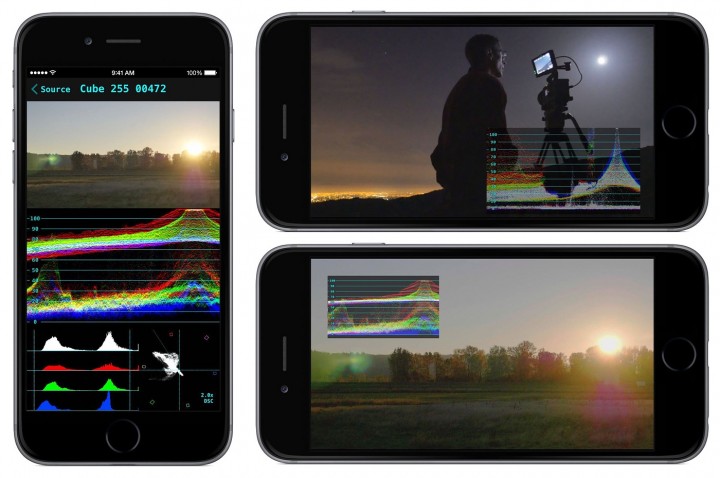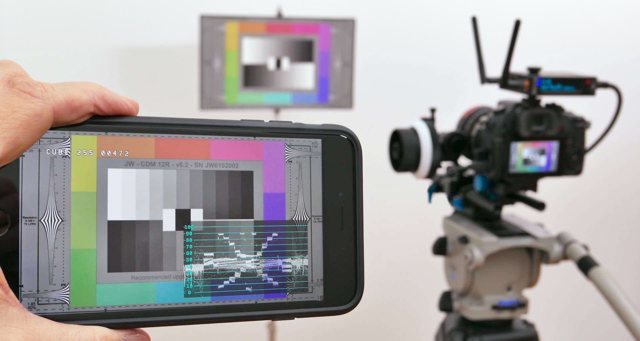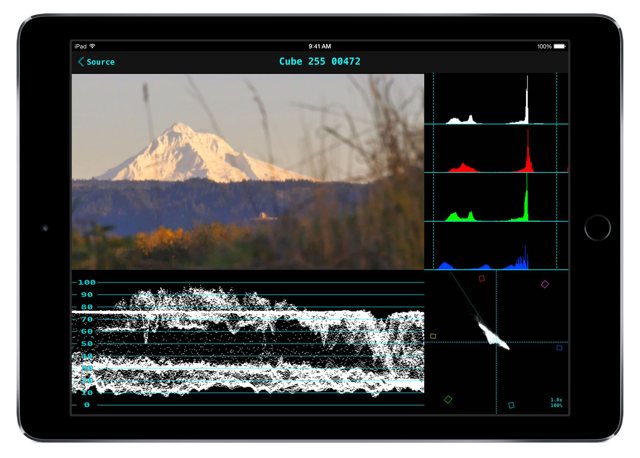Shameless commercial message: I’ve developed a new iPhone app, Wi-Fi WFM. It takes the wireless feed from a Teradek Cube, Clip, or VidiU and displays its picture along with a waveform monitor, vectorscope, and/or histogram.
Wi-Fi WFM adds engineering ‘scopes to the picture display, so you can see exactly what the camera is doing in, in real time (well, almost). Now you can check white balance and exposure levels without a tethered ‘scope, and watch those levels as the camera roams the set or flies high on a drone.

I could go on, and tell you how this will change your life for the better (improve your videography! get higher-paying clients! attract staggeringly gorgeous romantic partners!), but I’m obviously biased.
Even so, I will say that if you’re in that narrow subset of folks who (a) uses Teradeks and (b) uses ‘scopes, you might want to have a look. I wrote it because I needed such a thing; maybe you’ll find it useful, too.
I’ll be at Cine Gear Expo this week, using Wi-Fi WFM in the DSC Labs booth, S239 in Stage 31 (tag-teaming with Art Adams). If you’re at the show, stop by and see it in use.
Disclosure: I wrote Wi-Fi WFM, so if you buy it, I’ll make money.


